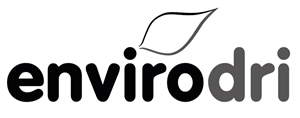How to make your office covid-secure
Following the latest address to the nation from Boris Johnson on 10th May where several lockdown restrictions are set to be relaxed including indoor hospitality and hotels opening, outdoor social contact rules being lifted and households being allowed to meet indoors, many businesses throughout the UK are now putting in place plans to bring work from home staff back to the office.
There is already a lot of support for employers regarding working safely during coronavirus and the success of the vaccine rollout coupled with the availability of rapid lateral flow test kits, the UK is now beginning to recover from the pandemic.
However, in order to stay on track, employers, staff and the public must still remain vigilant and ensure risk is well managed and effective cleaning and sanitisation routines are implemented throughout the workplace. This new step doesn’t need to impact the daily activities of a business, and if done correctly, should seamlessly fit into the working day without too much distraction.
Carry out a covid risk assessment:
Before staff return to their desks a full risk-assessment should be carried out on the premises, taking into consideration all aspects from seating arrangements to footfall, visitors and policies on staggered use of facilities.
There are a number of excellent resources on the HSE website , including risk assessment templates for offices and examples. These general risk assessments will assist you in keeping a record of:
- Who might come into harm and how this could happen?
- What you are doing to control the risks
- What further action needs to be taken to control risk?
- Who is responsible for carrying out the action?
- A deadline of when the action is needed by
A specific covid-secure risk assessment might cover areas such as:
- Identifying work activity or situations that might cause transmission of the virus
- Analysing how someone could be exposed
- Social distancing policies
- Cleaning, hygiene, and hand washing
- Ventilation and air conditioning
- Working from home / flexible working
- Vulnerable workers
- Action to be taken to remove activities or situations that are marked as high risk or how to control them
Risk-assessments should be regularly checked and updated, especially covid-specific risk assessments where changes in legislation or guidance is likely to happen frequently as navigate the new normal.
From the risk assessment employers will be able to identify several key areas to set actions against, this could include what staff should be returning to work and when, how social distancing might work such as staggered arrival and departure times, restrictions on meetings and reducing activity in common areas, what PPE is required and how testing or vaccinations might play a part in the future.
All steps are equally important, but not all of them need to be difficult or laborious, in particular; cleaning, hygiene and hand washing, if the right procedure is implemented from the start and the right products are used to ensure full compliance and safety.
Cleaning and disinfecting your workplace to reduce the risk of covid-19 transmission
Coronavirus (Covid-19) is a respiratory virus, spread primarily through droplets generated when an infected person coughs or sneezes (direct-contact). Although the risk of contracting the virus by touching a surface is significantly lower it is still a factor that should be alongside other preventative measures put in place. Through the regular action of cleaning and disinfection, the risk of contracting covid-19 by touching a surface (fomite transmission) is significantly reduced.
Cleaning regularly helps to reduce the amount of dirt on a surface and effective sanitisation and disinfection will eliminate microbes. The efficacy of these procedures is entirely dependent on how regularly this happens, the products used, how they’re used and how thorough the cleaning is performed. How long the virus can live on a surface is also dependent on a large number of factors and variables. For a full study into fomite transmission the CDC have published a comprehensive overview of SARS-CoV-2 and surface transmission for indoor community environments here .
The main objective in keeping workspaces clean is to prevent the transmission of the virus by touching contaminated surfaces. Good hand hygiene is vital in this and everyone in the business should be reminded and encouraged to wash their hands regularly throughout the day. When access to soap and water is limited, hand sanitisers should be used.
By providing hand sanitiser in multiple accessible locations through-out a business, including dispensers and also equipping employees and visitors with their own personal pocket-sized hand sanitiser can go a long way in helping keep surfaces clean and reducing transmission.
Additionally, to this, the frequent cleaning of objects and surfaces that are touched regularly is essential. This is most often light switches, keyboards, phones, door handles and shared devices such as printers, screens, and remote controls. It is also a good idea to limit the use of high-touch items where possible and ensure waste and belongings are removed from a work space at the end of each day to carry out a thorough clean.

